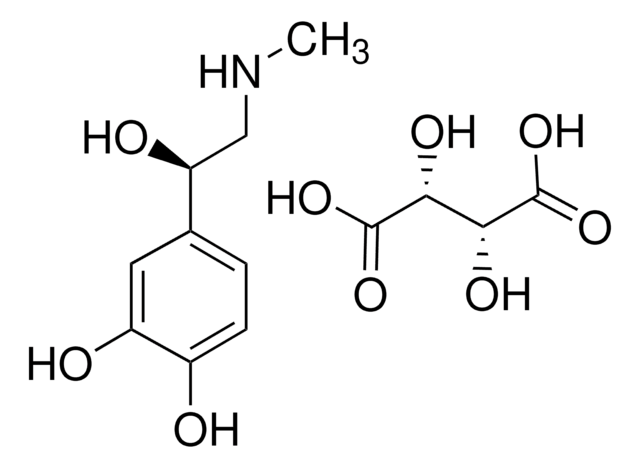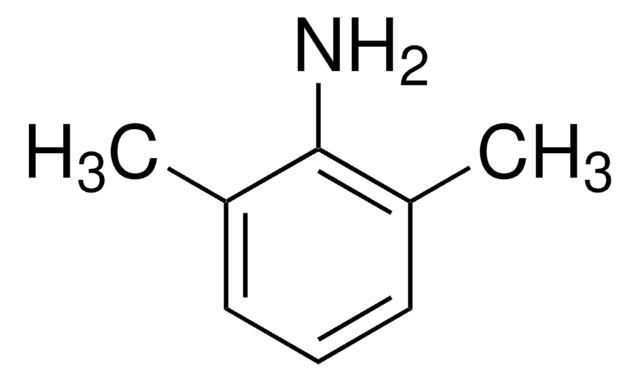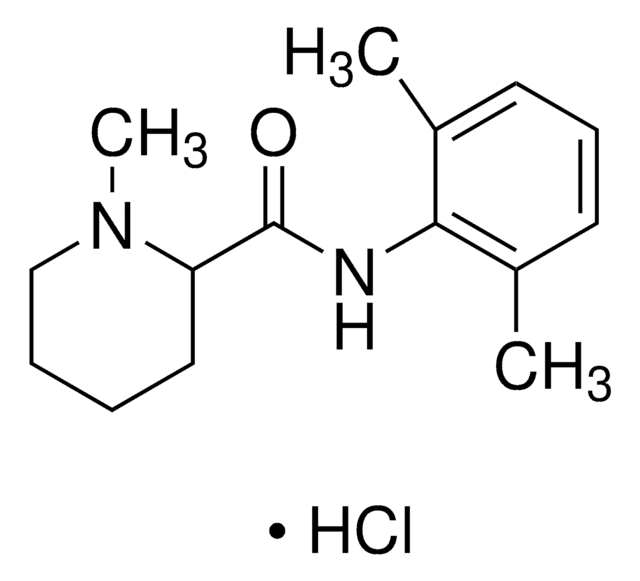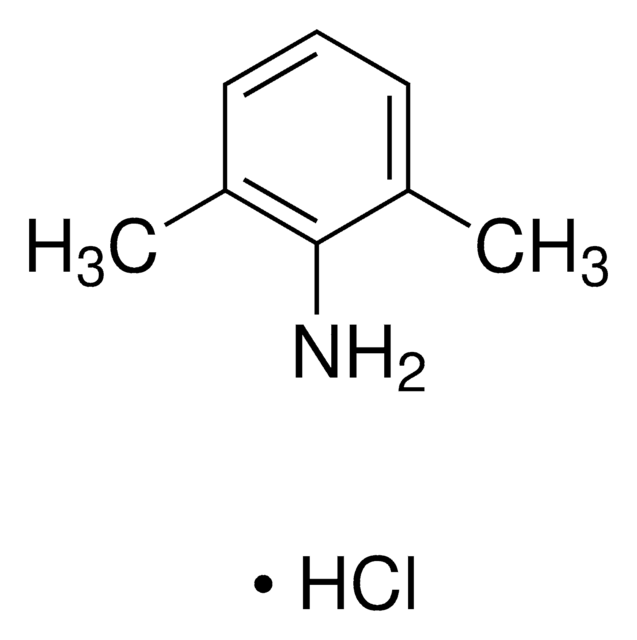PHR1257
Lidocaine hydrochloride
Pharmaceutical Secondary Standard; Certified Reference Material
Sinónimos:
Lidocaine hydrochloride monohydrate, 2-Diethylamino-N-(2,6-dimethylphenyl)acetamide hydrochloride monohydrate, Lignocaine hydrochloride monohydrate, Xylocaine hydrochloride monohydrate
About This Item
Productos recomendados
grade
certified reference material
pharmaceutical secondary standard
Quality Level
agency
traceable to BP 214
traceable to Ph. Eur. L0600000
traceable to USP 1366013
API family
lidocaine
CofA
current certificate can be downloaded
technique(s)
HPLC: suitable
gas chromatography (GC): suitable
application(s)
pharmaceutical (small molecule)
format
neat
storage temp.
2-30°C
SMILES string
Cl[H].[H]O[H].CCN(CC)CC(=O)Nc1c(C)cccc1C
InChI
1S/C14H22N2O.ClH.H2O/c1-5-16(6-2)10-13(17)15-14-11(3)8-7-9-12(14)4;;/h7-9H,5-6,10H2,1-4H3,(H,15,17);1H;1H2
InChI key
YECIFGHRMFEPJK-UHFFFAOYSA-N
Gene Information
human ... SCN10A(6336) , SCN11A(11280) , SCN1A(6323) , SCN2A(6326) , SCN3A(6328) , SCN4A(6329) , SCN5A(6331) , SCN7A(6332) , SCN8A(6334) , SCN9A(6335)
¿Está buscando productos similares? Visita Guía de comparación de productos
General description
Pharmaceutical secondary standards for application in quality control, provide pharma laboratories and manufacturers with a convenient and cost-effective alternative to the preparation of in-house working standards.
Lidocaine hydrochloride is an amide type local anaesthetic that belongs to the class of 1b antiarrhythmics. It is used for regional nerve blocks and infiltrative administration of anaesthesia. It prevents the entry of sodium ions into nerve endings, at the site of pain, and disrupts the electrical signal from reaching the brain.
Application
- Sensitive determination of lidocaine hydrochloride and cetylpyridinium chloride in their binary mixtures in different pharmaceutical formulations by three spectrophotometric-based methods
- Simultaneous analysis of aminoacridine hydrochloride and lidocaine hydrochloride in bulk powder and pharmaceutical formulation by high-performance liquid chromatography (HPLC) and thin-layer chromatography (TLC)-densitometric methods
- Quantification of ceftriaxone sodium and lidocaine HCl in human plasma samples by high-performance liquid chromatography coupled with tandem mass spectrometry (HPLC-MS/MS)
- Quantitative analysis of lidocaine hydrochloride and miramistin in a wound healing gel sample by high-performance liquid chromatography (HPLC) combined with UV detection
- Development of a method based on liquid–liquid extraction of nifedipine and lidocaine hydrochloride from human plasma samples for their subsequent analysis by high-performance liquid chromatography-tandem mass spectrometry (HPLC-MS/MS)
- Dispersive liquid-liquid microextraction (DLLME) followed by attenuated total reflectance-Fourier transform infrared measurement of dry films for the determination of lidocaine hydrochloride in human urine sample
Biochem/physiol Actions
Analysis Note
Footnote
Recommended products
Related product
signalword
Danger
hcodes
Hazard Classifications
Acute Tox. 3 Oral
Storage Class
6.1C - Combustible acute toxic Cat.3 / toxic compounds or compounds which causing chronic effects
wgk_germany
WGK 3
flash_point_f
Not applicable
flash_point_c
Not applicable
Elija entre una de las versiones más recientes:
¿Ya tiene este producto?
Encuentre la documentación para los productos que ha comprado recientemente en la Biblioteca de documentos.
Los clientes también vieron
Nuestro equipo de científicos tiene experiencia en todas las áreas de investigación: Ciencias de la vida, Ciencia de los materiales, Síntesis química, Cromatografía, Analítica y muchas otras.
Póngase en contacto con el Servicio técnico








